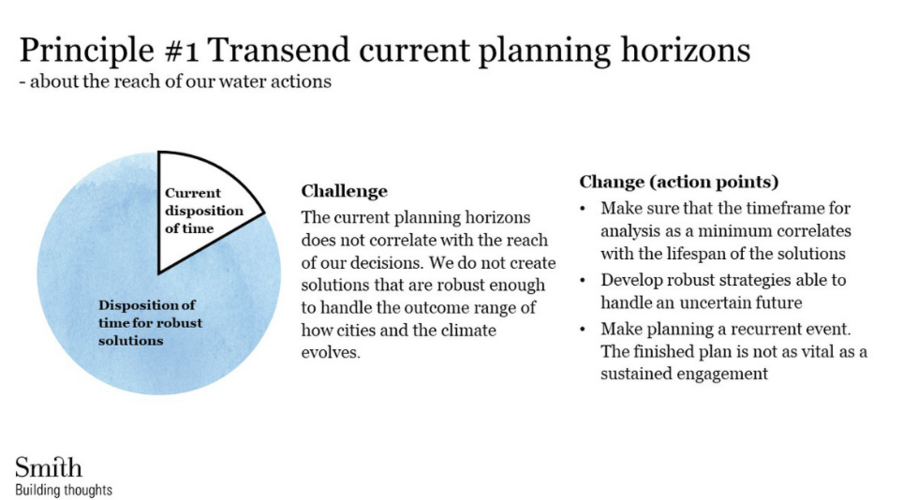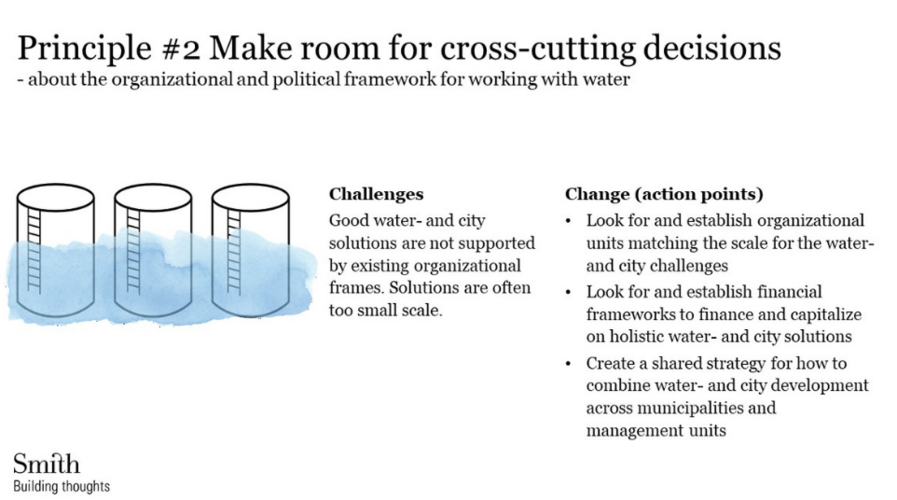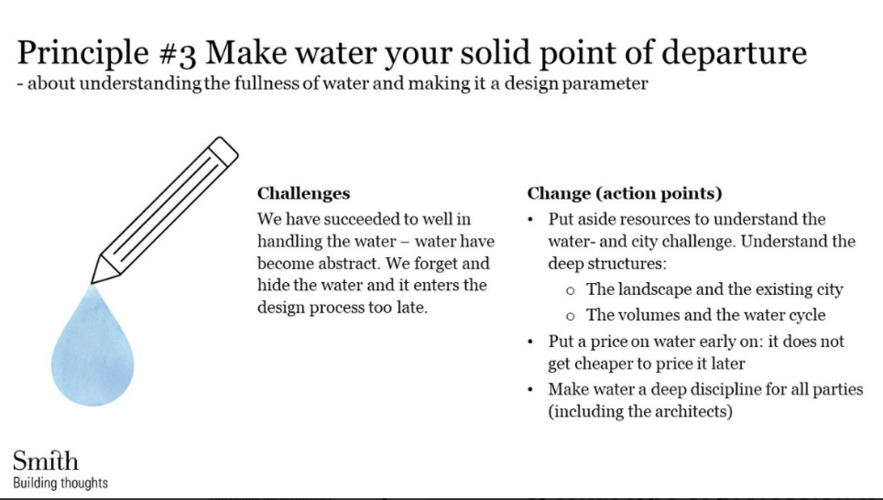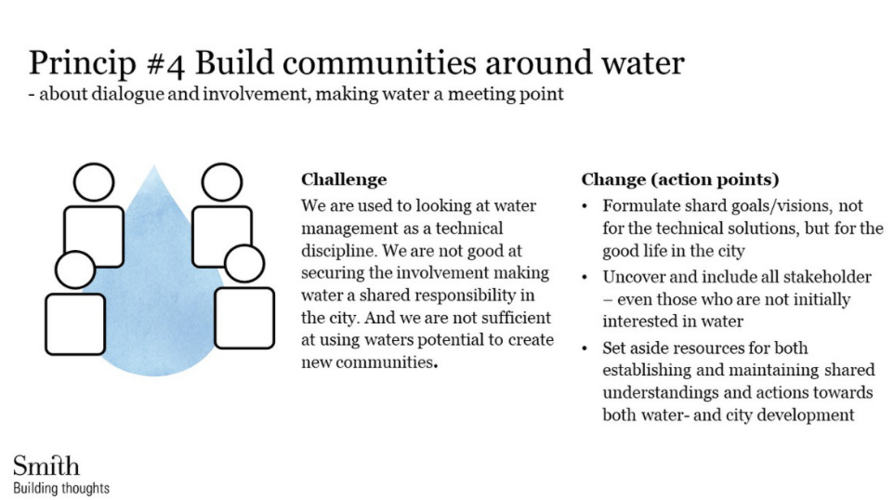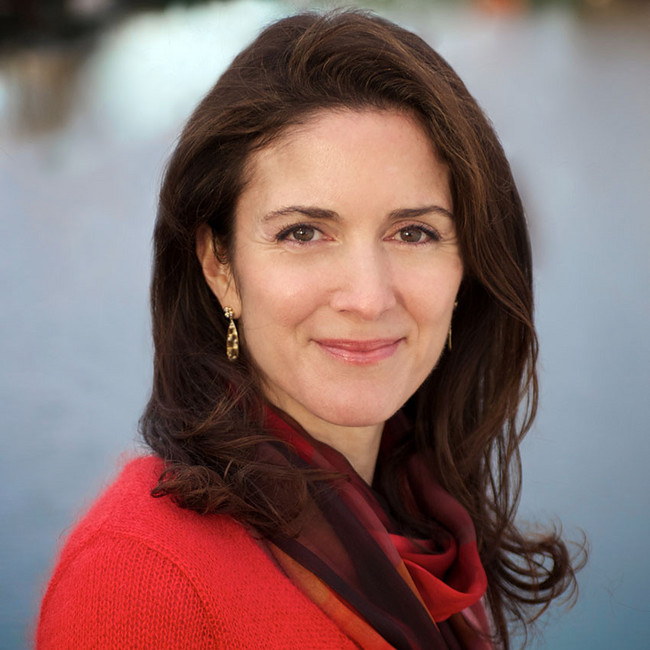
Watercities Blogpost 4/5
The fourth blogpost is written by Susannah C. Drake, founding principal of DLANDstudio Architecture and Landscape Architecture.
1) Give a brief introduction of you, your field of work, and what has let you to work in that area.
I am the founding principal of DLANDstudio Architecture and Landscape Architecture. For two decades my practice has focused on the intersection of water systems and urbanism. I am deeply interested in geophysical systems and how they impact cities.
2) From the perspective of your profession what are the biggest challenges of planning the green, grey, and blue cities of tomorrow?
The challenge is that designers don’t have agency. Real estate developers, public agencies and elected officials have more control over what gets built. Their profit motivations may not align with greater urban resilience.
3) In relation to the previous question which of the following proposed action points for Water Wise Planning do you think are particularly important to work with?
#1. Transend current planning horizons
#2. Make room for crosscutting decisions
#3. Make water a solid reference point
#4. Build communities around water
I think it is important to transend current planning horizons because currently, planning horizons align too closely with political rather than environmental calendars. Policy needs to be set for longer time horizons. Policy also needs to be related to regional, city ad hyperlocal scales of action and consider many different constituents. Communities should be created that respect the force and extent of water movement. Therefore, I think it is very important to build communities around water.
4) What are the good examples of solutions to these challenges?
Our proposal for the RPA 4th Regional Plan for the Regional Plan Association outlines important strategies for development of what we call Coastal Urbanism.
5) For the IWA World Water Congress & Exhibition 2022 a high-level summit will be held. What do you think, are decision makers’ most important task to succeed in what you described so far?
I believe that we need to design with rather than against forces of nature. I believe that we need to work with rather than around communities. I believe society needs a much stronger understanding of hydrodynamics.
I think we need influencers to take on the charge. Connecting designers with celebrities (musician and actors) that have broad appeal and a strong voice might help catalyse public opinion. This happened in the early 1970s with singers like Joni Mitchell and Marvin Gaye singing about degradation of the landscape. Their songs helped strengthen the environmental movement and development of the US Environmental Protection Agency.
Connect Susannah Drake with Drake the musician. Maybe team Drake can make a difference.
